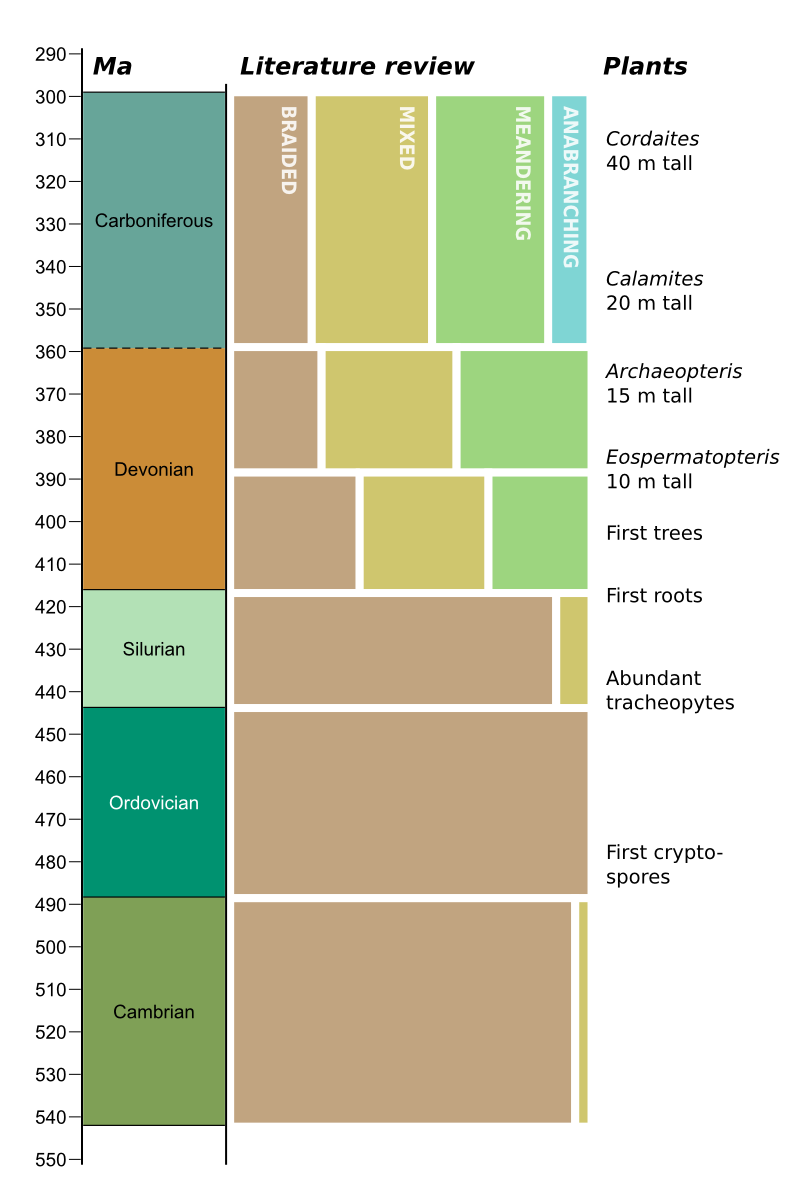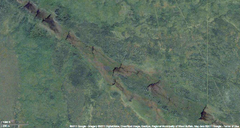The etiology of rivers
/The Ordovician was a primitive time. No mammals. No birds. No flowers. Most geologists know this, right? How about this: No meandering rivers.
Recently several geo-bloggers wrote about geological surprises. This was on my shortlist.
A couple of weeks ago, Evan posted the story of scale-free gravity deformation we heard from Adrian Park and his collaborators at the Atlantic Geological Society's annual Colloquium. My own favourite from the conference was Neil Davies' account of the evolution of river systems:
Davies, Neil & Martin Gibling (2011). Pennsylvanian emergence of anabranching fluvial deposits: the parallel rise of arborescent vegetation and fixed-channel floodplains.
 Neil, a post-doctoral researcher at Dalhousie University in Nova Scotia, Canada, started with a literature review. He read dozens of case studies of fluvial geology from all over the world, noting the interpretation of river morphology (fluvotype?). What he found was, to me at least, surprising: there were no reported meandering rivers before the Devonian, and no anabranching rivers before the Carboniferous.
Neil, a post-doctoral researcher at Dalhousie University in Nova Scotia, Canada, started with a literature review. He read dozens of case studies of fluvial geology from all over the world, noting the interpretation of river morphology (fluvotype?). What he found was, to me at least, surprising: there were no reported meandering rivers before the Devonian, and no anabranching rivers before the Carboniferous.
The idea that rivers have evolved over time, becoming more diverse and complex, is fascinating. At first glance, rivers might seem to be independent of life and other manifestly time-bound phenomena. But if we have learned only one thing in the last couple of decades, it is that the earth's systems are much more intimately related than this, and that life leaves its fingerprint on everything on earth's surface.
A little terminology: anastomosing, a term I was more familiar with, is not strictly the correct term for these many-branched, fixed-channel rivers. Sedimentologists prefers anabranching. Braided and meandering river types are perhaps more familiar. The fluviotypes I'm showing here might be thought of as end members — most rivers show all of these characteristics through time and space.

What is the cause of this evolution? Davies and Gibling discussed two parallel effects: bank stabilization by soil and roots, and river diversion, technically called avulsion, by fallen trees. The first idea is straightforward: plants colonize river banks and floodplains, thus changing their susceptibility to erosion. The second idea was new to me, but is also simple: as trees got taller, it became more and more likely that fallen trunks would, with time, make avulsion more likely.
 There is another river type we are familiar with in Canada: the string of beaver dams (like this example from near Fort McMurray, Alberta). I don't know for sure, but I bet these first appeared in the Eocene. I have heard that the beaver is second only to man in terms of the magnitude of its effect on the environment. As usual, I suspect that microbes were not considered in this assertion.
There is another river type we are familiar with in Canada: the string of beaver dams (like this example from near Fort McMurray, Alberta). I don't know for sure, but I bet these first appeared in the Eocene. I have heard that the beaver is second only to man in terms of the magnitude of its effect on the environment. As usual, I suspect that microbes were not considered in this assertion.
All of this makes me wonder: are there other examples of evolution expressing itself in geomorphology like this?
Many thanks to Neil and Martin for allowing us to share this story. Please forgive my deliberate vagueness with some of the details — this work is not yet published; I will post a link to their forthcoming paper when it is published. The science and the data are theirs, any errors or inconsistencies are mine alone.
Davies and Gibling went on to publish this research in Nature Geoscience in August 2011.
The BBC covered the story in their science pages.









 Except where noted, this content is licensed
Except where noted, this content is licensed